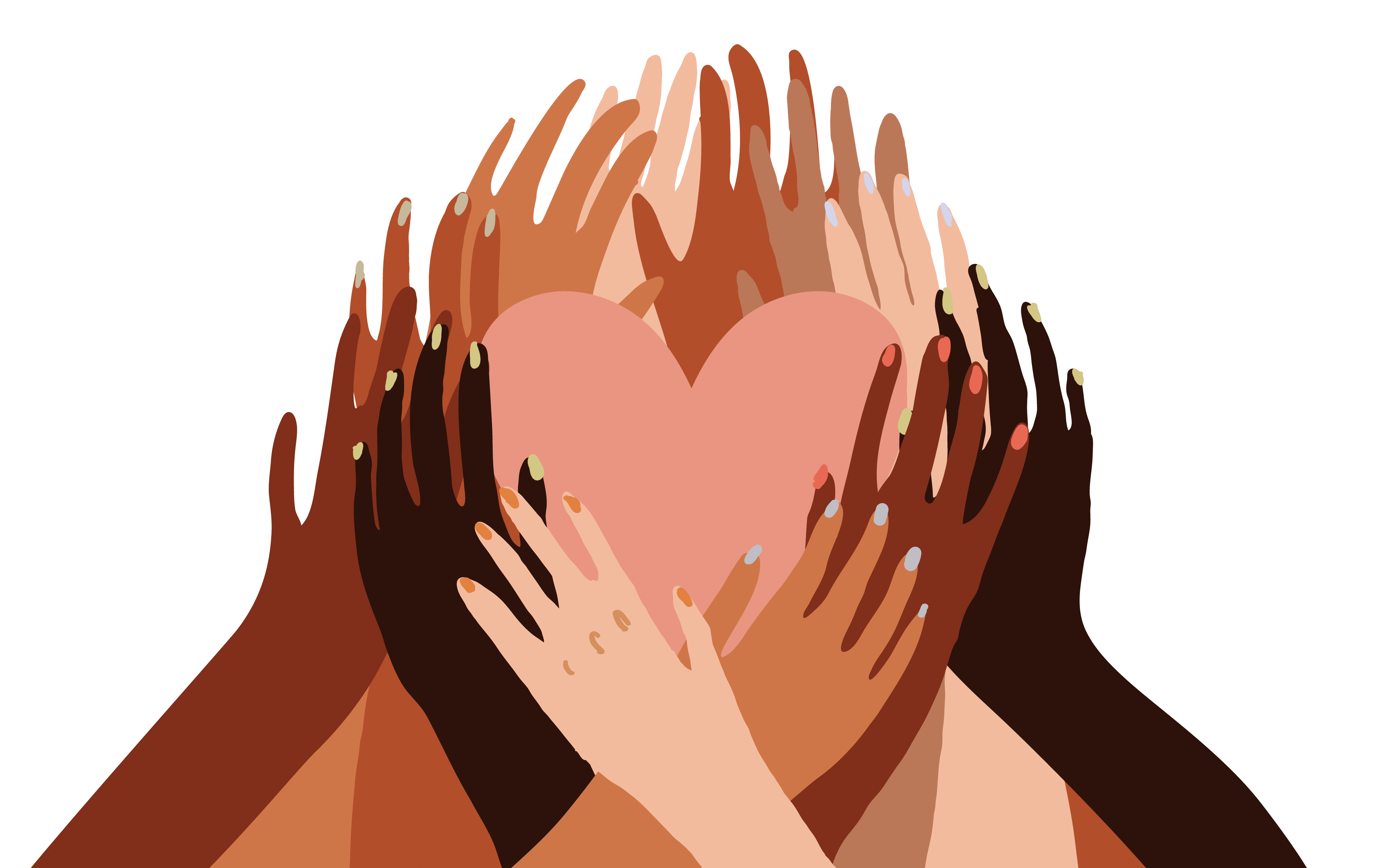How Shame Keeps Us Hostage to Racism
When we can work with shame instead of avoiding it, we open ourselves up to opportunities for growth and healing. The post How Shame Keeps Us Hostage to Racism appeared first on Mindful.

Welcome to the fourth article in this series on racial healing with mindfulness. With these articles and practices, we are navigating uncomfortable truths about race, racism, and the othering that exists in our very ethnocentric mainstream culture. Together, we’re working toward a more compassionate, kind world, which starts with looking inward. You can find the previous articles of this series here:
Please send your questions about racial healing and mindfulness to [email protected] and they may be answered in a future article.
The foundation of racial healing is emotional work. In fact, most long-term healing involves deep exploration of emotions. Fortunately, many of us have come to recognize that the competencies we call “emotional intelligence”—which we’ve termed to be “soft skills”—are really the rock-solid basis of meaningful and productive change. The ability to regulate emotions is a superpower.
Most people know emotions like happiness, sadness, anger, and fear as the big four in their emotional vocabularies, and not much else. In order to heal, we must develop the ability to lean in to the discomfort of other emotions. As we develop the stamina to look more carefully at racialized experiences, we begin to recognize how much emotion that racism elicits. One of these key emotions is one that we tend to want to avoid most: shame.
In this article, the invitation is to take a deeper dive into the role shame plays in keeping us from engaging in racial healing—literally holding us hostage from any productive reflection or conversations about race and our racialized identities and experiences.
Shame Drives White Fragility
My definition of White fragility is: a set of behaviors that make up a survival response by White people to both protect the sense of advantage that is there, and to maintain their sense of emotional safety.
After decades of this work, I’ve noticed that shame is actually the underlying emotion of the discomfort that primarily drives fragility. When White people explore fragility, it can bring up uncomfortable feelings like guilt and shame. This discomfort makes an alarm go off in their head that says “Abort! Stop the process! This is just too much!” This is often where people take the exit ramp back to comfort. The antidote is to welcome those cues and get curious, as this is precisely where the real work of racial healing begins.
I recently had a conversation with my colleague and friend Cara Jones on her podcast Untethered Voice, where she shared her experience of racialized shame as a White person. In the moment of her shame she felt embarrassed and insecure, but she investigated and looked deeper into that discomfort. Today, she says that moment helped set her on a path to finding her voice.
Our ability to be resilient and actually heal comes from our ability to move through shame and become more compassionate, more connected, and more courageous with ourselves. When we can do that, we are able to be better allies toward each other.
In many circles, healing has been glorified as something trendy, but it’s more than a fad. It’s very necessary, and it can’t be rushed; healing takes the time it takes. Healing requires an excavation and allows for growth, and when it’s tended to properly, its outcomes that far exceed our expectations. Yet we have a tendency to protect ourselves from this blossoming because it requires releasing our careful control of what emotions we let into our awareness and which ones we hold at bay, like those that feel unfamiliar or overwhelming.
As we learn to make room for uncertainty in our racial healing, we can surrender any judgment or expectations that may arise for ourselves (as well as others). We may think we can predict our healing journey and then judgments and expectations can creep in that cause us to wonder, “Am I getting this right?” Am I doing enough? Am I enough?” When we let go of these judgments, we begin to recognize what kind of growth is possible.
One of the many benefits to mindfulness practice is that it makes us more sensitive to all the somatic signals being sent within our body. When we can surrender and anticipate new ways of being, the pathways to growth come into view in a whole new way. As you recognize how shame might show up for you in your body (sweaty palms, tightening stomach, tightened jaw, and so on), you can learn to detect it more carefully as helpful information rather than an emotion to avoid.
Taking this opportunity to examine shame more closely can help us learn to release control. Shame certainly can hold people hostage, so it’s critical to understand that marinating in guilt and shame does not create strong allyship; a mindful approach to racial healing enables us to use the feeling of shame as information, a sign of emotions to navigate rather than a signal to disengage.
A Closer Look—Defining Shame
Being a Certified Dare to Lead Facilitator, personally trained by Dr. Brené Brown, internationally recognized researcher on shame, I lean heavily on her teaching about shame and use my decades of expertise in emotional intelligence and racial healing to help us connect the dots to support us in our healing and transformation. Dr. Brown says, “Shame is the intensely painful belief that we are flawed and therefore unworthy of love and belonging.”
Shame is an old familiar feeling most of us have experienced at some point in our lives. It’s that feeling that we are just not good enough. Shame is closely connected to guilt, which is the idea that we did something bad, but shame is that deeper sense that we are bad. Since we all experience shame at some point in our lives, being able to recognize it is key. It’s not one of the big four basic emotions (happy, sad, angry, afraid) so we aren’t very good at naming it when it comes up.
Racial healing work requires connection—to self and to others—and shame makes that impossible.
Brené Brown tells us shame is actually the part of our psyche that kills connection and a heartfelt sense of belonging. Let that sink in: shame kills connection and a heartfelt sense of belonging. Shame plays a key part in racial healing as it keeps us from being comfortable in racialized situations. Shame keeps us hiding in disconnection, avoiding racialized conversations, and preventing us from examining our biases. Racial healing work requires connection—to self and to others—and shame makes that impossible.
How Shame Works
Part of racial healing work is to be aware of the lens you’re looking through, either as a person of color or a White person. Then, we can start by asking ourselves: How might shame be showing up for me, acknowledging my racialized experience?
Dr. Brown gives us three truths about shame in her book Dare to Lead::
We all have it. We’re all afraid to talk about it. The less we talk about it the more control it has in our lives.Our ability to be resilient and actually heal comes from our ability to move through shame and become more compassionate, more connected, and more courageous with ourselves. When we can do that, we are able to be better allies toward each other.
Shame has a physiology to it. As we have learned through neuroscience, the brain reacts to social pain in the same place it reacts to physical pain. That’s why these more challenging emotions have such power over us. We generally struggle to manage the discomfort. So, if you can identify how shame feels for you and where shame hooks you, then you can get unhooked from it.
This process can take a long time, and often involves lots of forgiveness, often starting with your ability to forgive yourself and extend self-compassion.
Generally, untangling from shame takes the use of a mindful pause and consciously shifting in the moment. When shame arises, take a breath and say to yourself, “Oh this is shame. This is how that feels.” You can train yourself to recognize the feeling of shame just as you would any other emotion. The process is similar to the steps for recognizing and interrupting actions based in bias.
From this place of awareness and recognition of what it is we’re feeling, we’re able to self-regulate and continue on in the process of racial healing, remain in conversation, and maintain connection.
Racialized Shame
When it comes to racialized shame, we explore the concepts of internalized oppression and internalized racism and how they lead to shame in different ways.
Shame and BIPOC
As we begin unlearning and learning our way out of our own racialized conditioning, the cultural damage is just as complex for Black, Indigenous, and People Of Color (BIPOC)it just shows up differently. Often, we have to heal from feeling less-than, after hundreds of years of being made to feel as though we are not good enough. We prove ourselves, we take on “White ways” in order to succeed, we may even internalize discrimination by enacting colorism, which shows up in beliefs like, “who is lighter is righter.”Even within our BIPOC community, there are certain racialized people that we will say are closer to the White spectrum, and make comparisons about who is more acceptable to White people. We can go down the line, Black people usually last, Asian people usually first.
Internalized oppression has gone on for hundreds of years in the Black experience, often stemming from slavery, mirroring the pain from being characterized and designated as either a “field slave” or a “house slave.” Today, the type of work that we may engage in, how “professionally” we speak or dress or act can often be summed up in assimilation. To assimilate is to prove ourselves as “enough” by the measure of how close we can get/be to “Whiteness.” How much have we surrendered our own cultural roots, for the sake of having it easier in this nation of systemic whiteness?
Shame and White People
White people often uncover guilt about the ancestral privilege and day-to-day privilege that they have. The interesting thing about guilt is that it focuses on behavior, “I did something bad.” And guilt has the potential to motivate people towards change. When White people feel a sense of guilt, they tend to want to take action. While guilt doesn’t feel good, it works that way for a lot of us.
Shame, on the other hand, is the feeling or belief that, “I am bad,” and focuses on the self, not the behavior. The result is that it often makes us feel disconnected and alone. The key is this:Shame has never been known to lead to positive change because shame generally causes hiding and inaction.
Shame Shields
As a response to the weight of the shame, we learn and condition ourselves to employ what Brené Brown calls the three “Shame Shields.”
1. Moving Away is when you’re trying to protect yourself from shame. Maybe you withdraw, hide, keep secrets, or avoid. That’s generally called “gatekeeping behavior,” and it comes up when you are wanting to move away from a situation.
Sometimes people withdraw to an affinity space, which can be another way of using the shield of moving away, yet it’s more nuanced than others. Affinity spaces are necessary and supportive, yet not when used as a means to hide or avoid mixed-race spaces and racial healing. I’ve supported the healing of many White people who had more ingrained deepened layers of shame due to their time spent only in White segregated spaces. The feeling of “I’m not good enough or worthy to be with BIPOC because I will cause harm” has a shame-inducing effect.
2. Moving Toward often shows up as “please and appease.” It’s generally where many BIPOC will go into the conditioning of protecting White people’s right to comfort. It’s also generally where White people will be agreeable all of a sudden by any means necessary, knowing their main objective is to just get out of “this conversation” as quickly and smoothly as possible. (White people usually aren’t conscious that their fragility is what’s driving them to behave in this way, while BIPOC tend to recognize it quickly.)
3. Moving Against is gaining “power over, aggression, fighting shame with shame.” In a racialized context I see this as the most significant symptom of a deep lack of connection. It looks like statements and behaviors that signal: “I will not connect with you. I will leverage privilege and status. I will lash out and snap-back.”
As a Black woman, when I have used this shield, it showed up as performativity as it does for a lot of BIPOC. We are raised on the belief that we have to do more, be better. That’s our messaging, “You’re going to have to work three times as hard just to be at the table.” It leads to a feeling that we need to prove what I refer to as our “enoughness.” That’s fighting shame with shame and “hustling for our worth” (another favorite Brené term for all of you Brené Brown fans).
We all have our shields, and it’s not a matter of if we use them, it’s a matter of which shield and with whom, and when we will use one. The use of the shields is situational and can vary. It’s imperative that we learn to recognize shame in our bodies and psyches and practice interrupting it when we are triggered by shame. Then we can navigate shame skillfully and not reach for the shields of disconnection but instead intentionally cultivate connection.
Moving Toward Empathy and Compassion With Mindfulness
With these understandings about shame, you are now more equipped to continue reflecting on your behaviors and beliefs that dictate how you show up, in and out of racialized spaces. Brené Brown’s research shows that the key antidotes to shame are empathy and compassion. Empathy and compassion are also key teachings in our mindfulness work and there’s a plethora of resources and meditations to support our growth in this area. Science also teaches us that consistent meditation practice supports the development of the part of our brain called the insula, which deepens our ability to be more empathetic and compassionate.
I believe that the final goal in racial healing is to develop deep and lasting compassion across differences, and that comes from building complex understandings that lead to robust cultural humility. This process can take a long time, and often involves lots of forgiveness, often starting with your ability to forgive yourself and extend self-compassion.
To get started, explore:
A meditation practice. Tuning into the physiological cues around feelings of shame will help heighten your awareness when it comes up and provide an opportunity to explore it and move through it. The Mindful Pause. This practice complements the meditators tool box. Taking a moment to breathe and process the shame that arises helps people embrace discomfort during the learning process by extending love, care, and compassion across differences. Joining or starting a community with a shared goal of racial healing. Encouraging people to engage in racial healing together builds automatic communities of care working to save humanity. The passion and energy created in those spaces turn out to be powerful and enduring connectors.Go there. Surrender control and go all in. At the same time, be gentle with yourself, as you begin to honestly reflect and unlearn. And of course, get serious about forming a group of brave fellow travelers on this journey. Racial healing is not for the faint of heart. It requires courage and is necessary for each and every one of us dedicated to making positive change in our world.
Journaling Prompts for Reflection
1. Note everything you can think of about your relationship with shame. Do you feel ashamed all the time? Maybe you haven’t ever felt shame. Do you feel shame when it comes to race and racism? Explore the whys of all of that. Give yourself time to write down everything you can think of on the topic of shame and your experience with it.
2. Consider fundamental questions you have about shame and how it operates. Write them down and let ideas flow freely to get to deeper questions. In the safety of your personal journal, give yourself permission to explore and say things you might be scared to even think. (If you like, you can even email your questions to yourwords@mindful.org and I may respond to them in an upcoming article.)
3. Consider the forgiveness that needs to happen as a part of the process of unearthing and healing from shame. Are there things you need to consider forgiving someone or a group of people for? Are there things you need to forgive yourself for? If nothing comes up right away, start writing and see what comes up.
If you haven’t already, now might be a great time to invite someone in to discuss these ideas with. Accountability partners are key. Be kind to yourself, and keep going
A Guided Meditation for Working With Shame
In this meditation we’re going to cultivate shame resilience, building resilience in our response to shame and enabling us to bring in greater self-compassion.
I invite you to sit comfortably with your gaze down or close your eyes. And simply take three deep breaths, just signaling to your body that we’re about to do this. Simply allow your breathing to settle at a rhythm that feels comfortable for you. Maybe engage in breathing that’s a little bit slower than usual, and maybe a little bit deeper than usual. Let’s be mindful to take deep breaths down into our stomach and not shallow in our lungs. You can feel that depth in your breathing. Just noticing. Let’s just sit together for a moment in silence. As we prepare to recognize and engage with shame, I just want to take a moment to remind us that guilt and shame can feel very similar, but they’re very different ideas and emotions. Guilt is driven by thoughts and feelings like, “I feel bad about what I did,” or “What I did was bad.” Remember that shame is driven by thoughts and feelings like “I am bad,” “I feel bad about myself,” “I am not enough.” While it’s perfectly fine and healthy to feel guilt when we make a mistake or do something that’s harmful to someone, there’s really nothing healthy about feeling shame about honest mistakes or missteps along the way of life. Shame is toxic. It really can cause us to shrink and hide. Shame can cause us to behave in ways that can be harmful or unproductive, and—even worse—simply not engage at all. Shame can make us feel victim to really harsh thoughts and judgments, especially about ourselves. So let us take a short journey together, exploring how shame shows up and let us allow for healing. Let us allow ourselves to go deep enough to engage in a level of healing together that will support us as we engage out in the world. Just returning to the breath, giving attention to the breath. The inhale and the exhale. Let us first just recognize what shame feels like in our bodies. I invite you to think of a time where you felt a sense of shame. And maybe you don’t want to bring up something too triggering or too overwhelming. You just want something accessible, but trust yourself. What are you ready to engage with within yourself? Whatever has arisen for you to work with is probably what’s worth working with. Just bringing that time, that incident to mind. Seeing it again. Feeling it again. Where are you feeling the shame in your body? Notice the sensations that are indicating shame. Maybe you feel it in your jaw. Maybe you feel it in your shoulders. Maybe your breathing has become shallower. Maybe your stomach is tight, palms are sweaty, underarms sweaty. Just noticing. There’s no right or wrong. This is simply your body and your emotions communicating with you. And how lovely it is to be able to notice and have this communication by just opening our awareness to what’s occurring in our bodies. As you’re exploring this memory of shame, noticing how it’s showing up in your awareness, what might be underneath this feeling of shame? Breathe deeper into that. What might be underneath the feeling of shame? Is it the feeling of not enough? Is it the feeling of needing to be perfect? Is it the feeling of defensiveness, being guarded, needing to protect? What is underneath the shame? Taking time to bring that into our awareness and to notice. Bringing in the sense of curiosity and noticing. What is this teaching me about myself? What is this teaching me about my relationship to shame? What is causing me to feel that I am bad? Just be curious. Explore it. I can feel you really leaning in and I am with you. We are in this together. You are not alone. And let us deepen in our healing around shame. Let us bring in and embrace compassion. What I love about compassion that I want to invite us into is, can you talk to yourself the way that you talk to someone you love? Perhaps thinking about what happened around shame or making a mistake. How would you lovingly speak to your friend, your colleague or family member who was feeling the same way or made the same mistake? What would you say to them that would be supportive and kind and loving.
 UsenB
UsenB 



















.jpg&h=630&w=1200&q=100&v=6e07dc5773&c=1)












